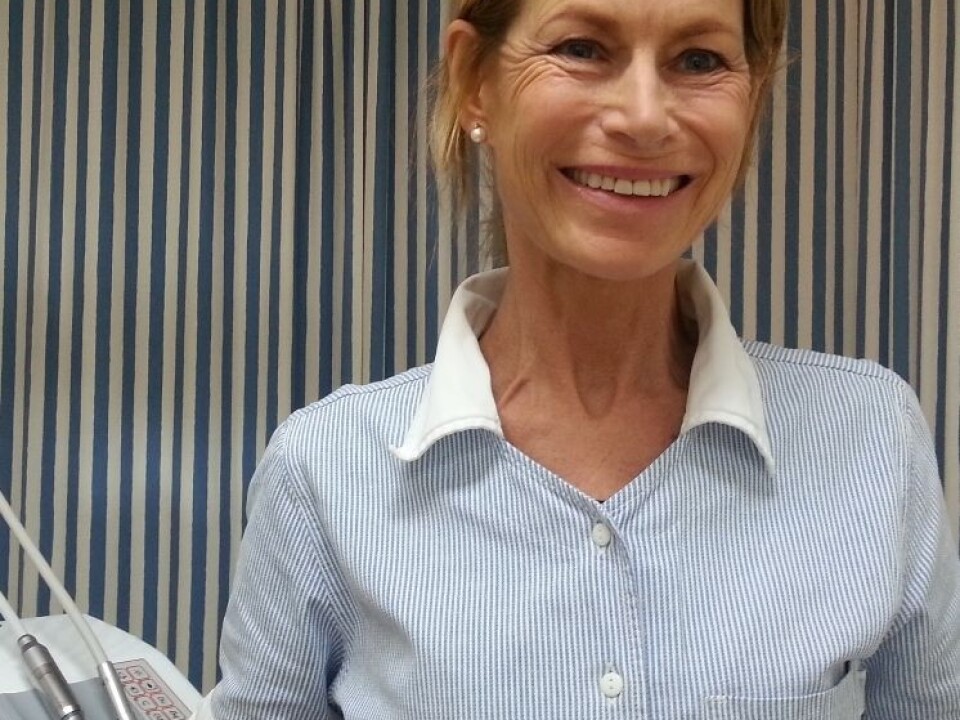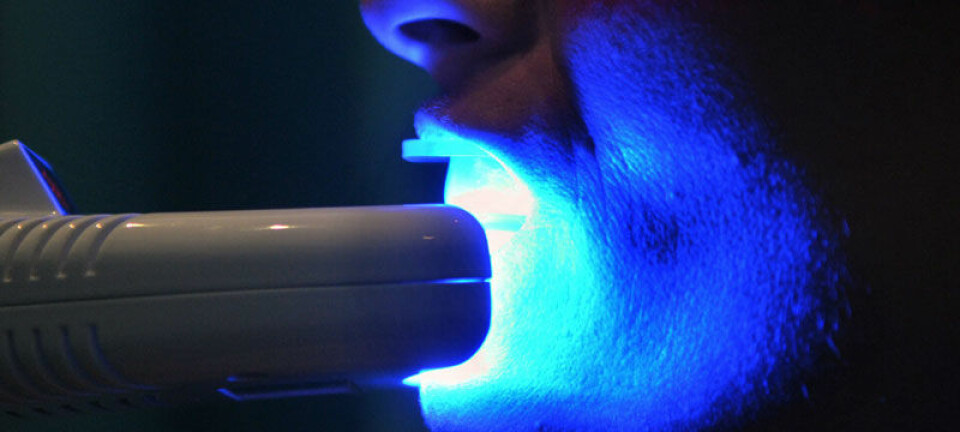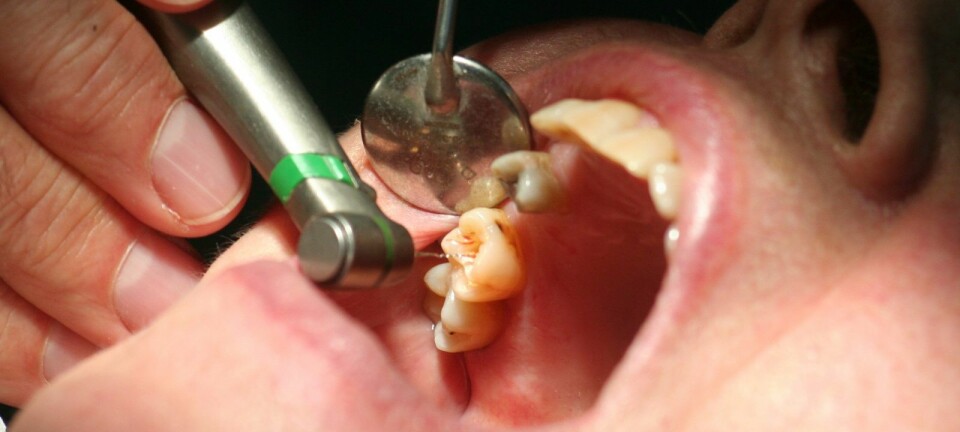
Why do we brush our teeth in cold water?
We wash dishes, clothes and our bodies in warm water – yet we turn the tap to cold when it comes to our teeth. Why?
Denne artikkelen er over ti år gammel og kan inneholde utdatert informasjon.
“It’s simply a matter of habit,” says Professor Anne Skaare.
“We drink cold water and consider it more refreshing. But it actually doesn’t matter whether we use cold or warm water on our teeth,” says Skaare, who works at the University of Oslo’s Institute of Clinical Dentistry.
We have learned that warm water loosens fats – and the warmer the water the cleaner we wash clothes and dishes in the cleaner they get. Why doesn’t this apply to teeth?
“We couldn’t brush out teeth with water that was hot enough to melt fats. We couldn’t keep it in our mouth long enough to have any effect. Besides, toothpaste contains soap, which dissolves the fat,” says Skaare.

She thinks warm water would not give any clear advantages, but on the other hand neither does cold water.
Fluoride is the star
Our mouths are teeming with bacteria, up to 800 different kinds. They live among our teeth, in saliva and on the tongue in a closely regulated ecosystem. They attach in numbers as a film to our teeth rather than float around in our mouths.
When you brush your teeth you are disturbing the ecosystem. You scrape away some of the bacteria film with the brush and spit some of it out. But then the bacteria multiply and reattach and soon you have to brush again.
Skaare says that water is not all that useful when it comes to brushing teeth. The manual brushing and the fluoride in toothpaste are what really pack a punch against the bacteria.
Toothpaste as the product we know today is over 100 years old and continues to be useful in preventing cavities. Nowadays its key function is as a carrier of fluoride.

The rest of the contents of toothpaste are all about cosmetics and making your mouth and breath feel clean and refreshed.
Toothpastes contain a number of ingredients with individual tasks:
The detergent dissolves food and fats. Abrasives remove discoloured coatings and plaque, making the teeth feel smoother, and the taste makes your mouth seem pleasantly fresh.
The real star in a toothpaste is fluoride. The bacteria create acids which dissolve the enamel of your teeth. But fluoride repairs the injured enamel.
Water is the least important
Water is the least important ingredient when brushing your teeth and it can actually be counterproductive:
“If we use a lot of water and rinse well afterwards we are diluting the effect of the fluoride toothpaste. The fluoride should remain on your teeth to prevent the acid attacks of the bacteria,” says Skaare, whose research includes tooth decay – cavities or caries.
Although the professor advises against using too much water when you brush your teeth, some liquid is needed.
But it doesn’t matter one iota whether you use warm or cold water. She doesn’t want to recommend one over the other.
“Warm water can contain metals [from your water heater and plumbing] but the amounts you could get through brushing are infinitesimal. You spit out most of it anyway.”
Warm water helps against hypersensitivity
The professor has no figures regarding how the numbers of us who prefer warm to cold water.
“I’m pretty sure there is research on the subject,” says Skaare, whose personal preference is cold water.
Dentis Gro Gjerdrum, who has a practice in downtown Oslo, chooses a middle road:
“Despite lacking any dental hygienic advantages, lukewarm water feels better as we get older, and the neck of a tooth gets sensitive and painful,” says Gjerdrum, who personally uses lukewarm water when she brushes.
She has the impression that her patients are traditional when it comes to their choice of temperatures:
“They prefer to use cold water as long as it isn’t painful.”
She stresses that lukewarm water doesn’t make teeth any cleaner:
“The motion of the bristles of the brush against the tooth surface is what does the cleansing,” says Gjerdrum.
—————————
Read the Norwegian version of this article at forskning.no
Translated by: Glenn Ostling

































